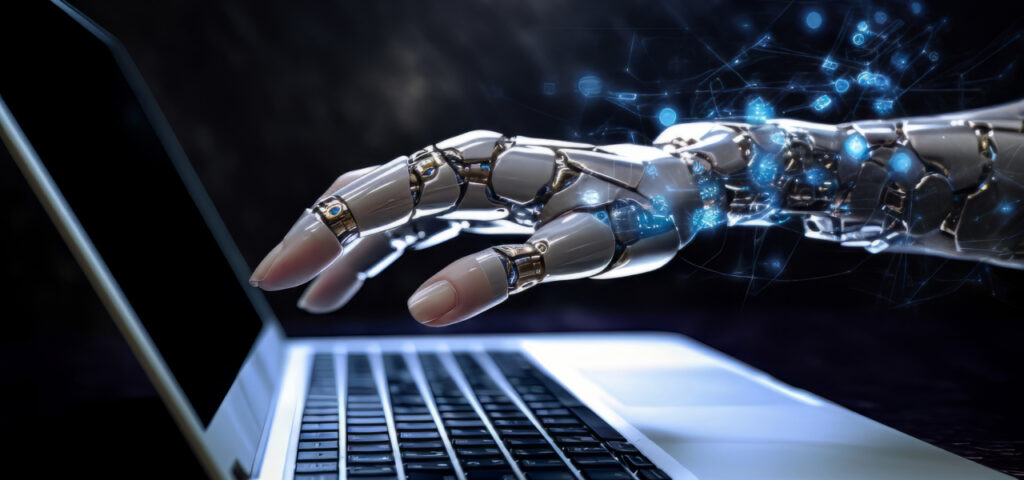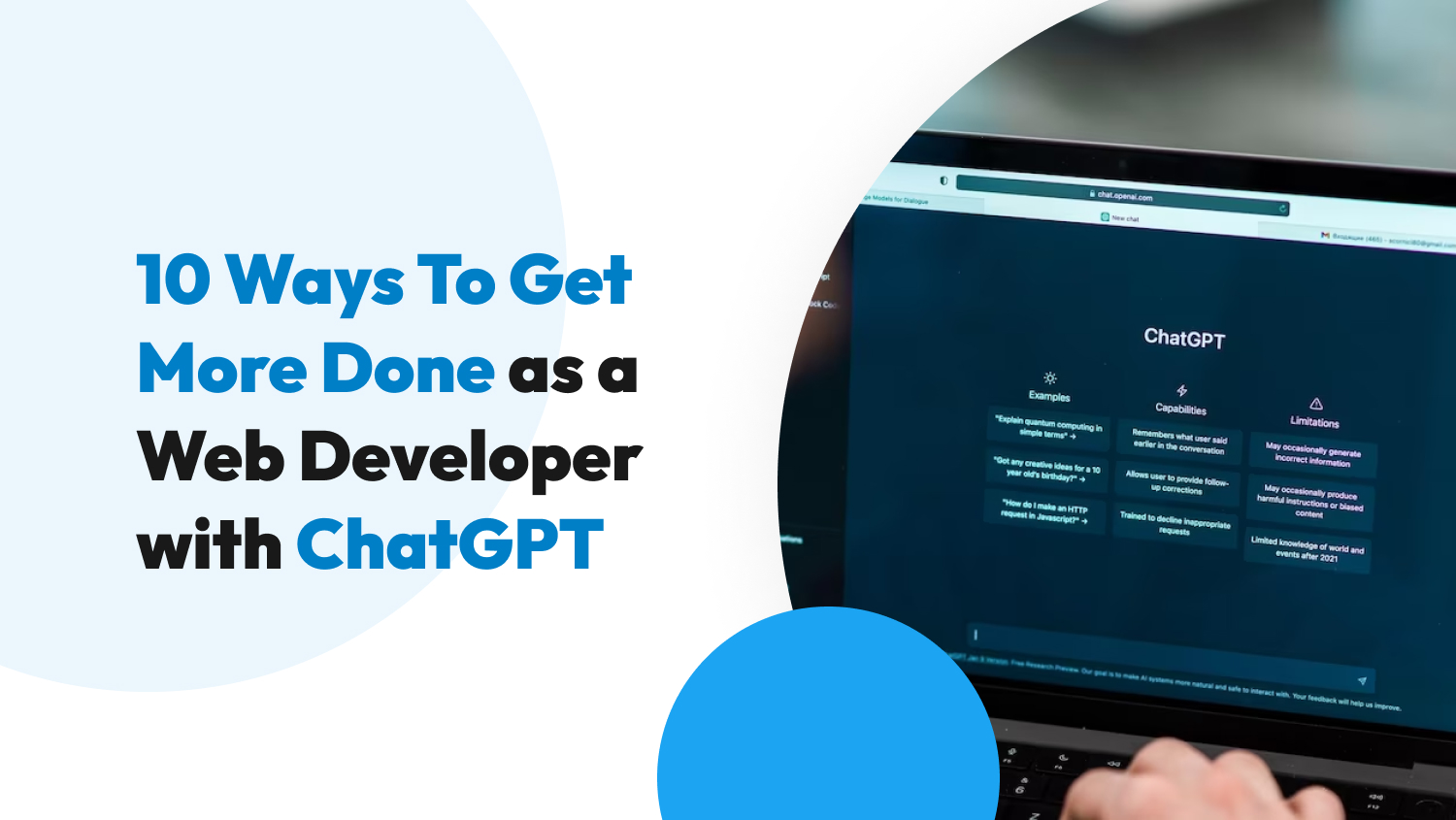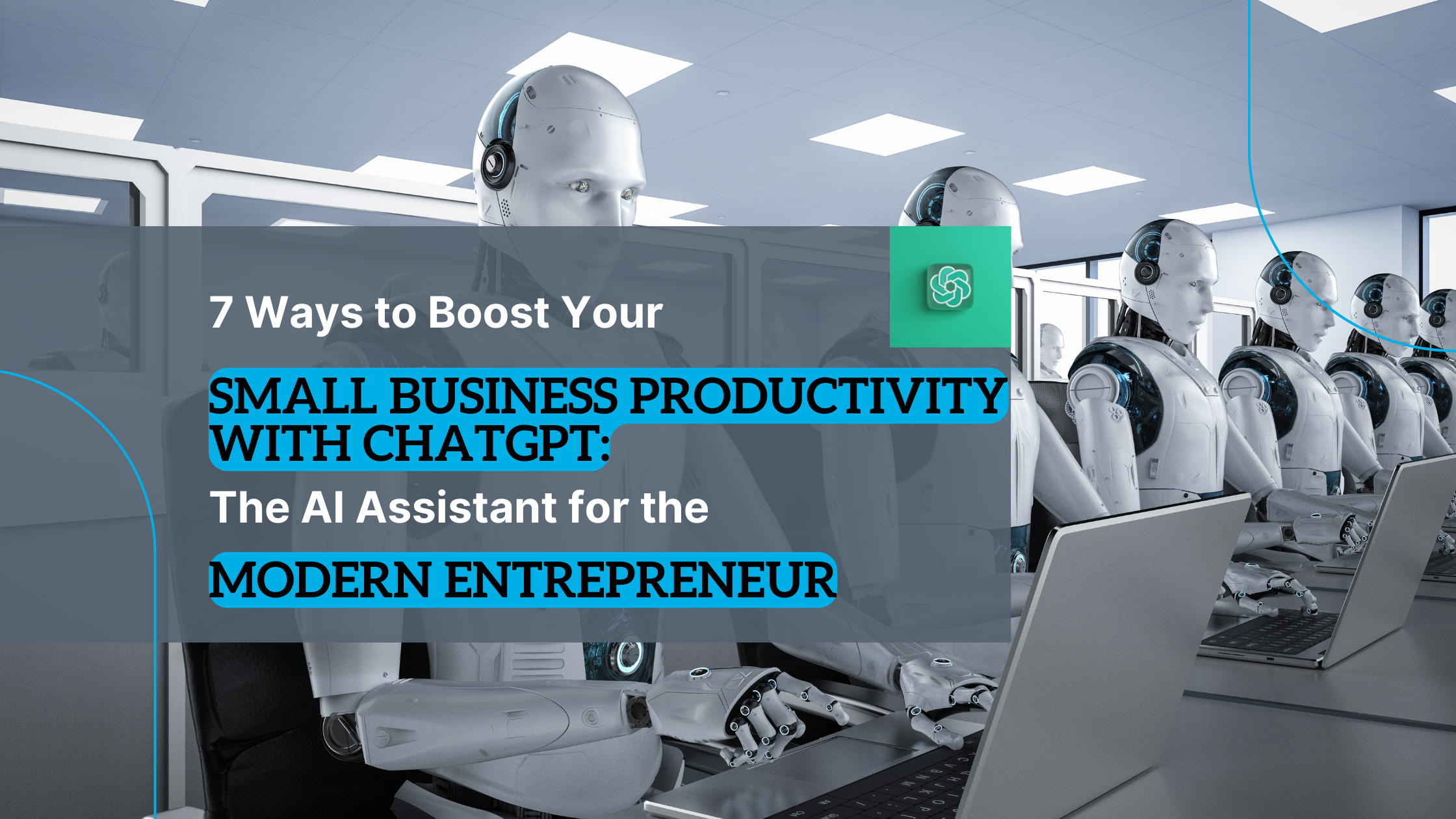ChatGPT
ChatGPT Decoded: A Deep Dive into the AI Phenomenon
Table of Contents
- What exactly is ChatGPT?
- Why is everyone buzzing about it?
- Where does it come from and how does it work?
- Ok, but how does it actually work? What’s under the hood?
- If it’s so smart why does it get stuff wrong sometimes?
- So what can you do with it? Does it live up to the hype?
- But is it safe? Can we trust it?
- What can we expect next?
- About Georgia Mountford-Blake
- Download Article as a White Paper
What exactly is ChatGPT?
Late last year, AI writing tools took the world by storm with the launch of ChatGPT and it’s clear this tech is here to stay. As with many exciting new things there is also a lot of misinformation and confusion and even fear out there – SO my goal today is to help empower you to make your own judgements, and decide if / how use ChatGPT with confidence should you wish!
Step one is to put some of these mind-boggling new AI concepts into simple terms that make sense. In this article I’ll explain how it actually works, where it came from, what YOU can use it for in work/business and everyday life, and I’ll attempt to address some of the big questions (“is it really ‘revolutionary’ or is it just hype?”) along with important safety concerns (“can we trust it?”).
Who am I to explain all this? My name is Georgia Mountford-Blake and I’m a former software engineer who now runs a tech & marketing consultancy business. I’m also a writer, trained in investigative reporting, and when I’m not serving my clients with digital strategy, you’ll find me exploring the latest technologies and sharing what I learn about the future world we’re building.
Let’s start with an analogy:
ChatGPT is kinda like having a homework buddy who’s read all the books in the world and is available 24/7 to help you answer questions, write essays, brainstorm ideas, reformat text, and much more. It’s far from perfect though – sometimes when we skim through a book and give someone the gist, we miss the point or add our own flair and ChatGPT can make these mistakes too, so always double-check before you take its word as gospel.
If you want it in literal technical terms:
👉 ChatGPT is an AI tool (a piece of software) that you can access on the web, or via a phone app
👉 It provides a conversational interface (chatbot) to a type of AI we call a “large language model” (or LLM)
👉 LLMs are designed to generate text. We also have LDMs (Large Diffusion Models) and these generate images.
👉 Both LLMs and LDMs are AI models based on neural networks and deep learning techniques
👉 ChatGPT is just one of many LLMs (others include Claude, BERT, Llama 2 and XLNet) (Don’t worry if the above looks like word soup to you – stay with me and it will get clearer as we go.)

Why is everyone buzzing about it?
ChatGPT isn’t the first AI writing tool of its kind. OpenAI released ChatGPT free to the public in Nov 2022 in order to attract broader engagement with the technology, encourage discussion of the practical and ethical implications of AI, and to gather more user feedback to refine future iterations of the model.
OpenAI designed ChatGPT to generate “satisfying human-like responses” to a wide variety of inputs given in natural language, such as “can you check this list for duplicates then reorder it alphabetically?” or “please write me a poem about pink grasshoppers”.
It turns out ChatGPT is incredibly good at doing what it was designed to do (and more!), so much so that it’s “legitimately scary” according to a few people.
Let’s look at some examples…
Content Creation Assistance
📧 Draft emails / compose responses
📊 Write reports & perform critical analysis
📱 Rewrite and optimize Social Media Content
Admin & Operations Support
📅 Transcribe meeting minutes and call out any action items
👥 Answer customer support enquiries
🤖 Batch reformatting and bulk processing of data
Personal & Professional Development
💡 Brainstorm ideas and bust writer’s block
👩🏻🏫 Conversational tutoring on a wide range of subjects
💪 Personalized fitness routines and/or nutrition plans
Cognitive Assistance / Executive Functioning
🎯 Project management and task breakdowns
🌍 Travel & event planning (destinations, itineraries, and packing lists and more)
📝 Summarize text (get the gist of long articles, email threads etc)
The above might read like a long list of general tasks you could already accomplish yourself with other tools but the magic of ChatGPT is twofold:
Number one:
You don’t need to learn how to use a new tool (or a whole bunch of tools!) or even be tech savvy. Now you get to just talk in natural language – yup, plain english! (or spanish, french, arabic, mandarin or 50+ other languages) – and that is a game changer.
Number two:
Computers are no longer restricted to rule based work (ie logical, literal, numerical, procedural types). Now they can be our companion for creative tasks too, which opens up a lot more doors for many people.
That’s pretty incredible!
Where does it come from and how does it work?
The simplest way to describe ChatGPT is like auto-complete or predictive text on steroids. Far beyond simply suggesting the next few words, though, it can infer the meaning of entire sentences, remember context from earlier paragraphs, and engage in a relevant ongoing conversation with you.
It is developed through a process called machine learning, which is where a system is trained on a large dataset and then fine-tuned iteratively with community feedback also playing a key role in identifying issues and improving the model. Basically, the developers feed the LLM a mountain of data (countless books, blogs, transcripts and other internet texts) and then repeatedly tweak the performance until they like the outputs. It’s kinda like training a puppy (the humans tell the machine when it’s been a good boy for making sense, and guide it back when it goes off the rails). This process is repeated over and over until ChatGPT becomes a text-generating whiz.
Before we go further, I want you to understand that we have lots of different types of AI in this world, many of which you’ve probably been using for years. For example: recommendation systems used by Amazon and Netflix, geospatial analysis used by Uber and Google Maps, speech recognition to talk to Siri, computer vision and facial recognition for real-time video filters or face unlock for your device – and so on. All these things are made possible through machine learning.
Recent advancements in this field (in particular deep learning, neural networks and transformer models) have given rise to a new specialized category called “generative AI” which brings me to the first important thing I want you to remember:
🔥 ChatGPT is a type of generative AI.
NOTE: From here on I have flagged important “knowledge-bites” you’ll probably want to remember – so if you see the fire emoji 🔥 try to commit that bit to memory (it will likely come back into play later!)
Other generative AI applications you may be familiar with include Midjourney, Jasper AI, Github Copilot, Descript, GrammarlyGO and more.
The name ChatGPT is short for ‘chatbot interface’ + ‘GPT language model’.
If we break it down further the GPT part stands for ‘Generative Pretrained Transformer’ which means:
- It’s Pretrained on a large amount of web text, books and data from the internet
- It uses Transformer technology (this part was the big breakthrough and we’ll dive deeper into that soon) and
- It is Generative as in it can compose (or generate) outputs based “what it has seen before” aka patterns in the training data
So, ChatGPT is a conversational interface (chat bot) that allows us to interact with a GPT-based language model.
Each version of GPT (the engine powering the model) gets bigger, better, and faster than the last, and the model itself (“m” in LLM) is a virtual tool we can query. A language model can generate words, in the same way an economic model can predict market trends or a statistical model can forecast research outcomes. This LLM (ChatGPT) has been specifically designed to generate human-like text for the purpose of chatting.
Ok, but how does it actually work? What’s under the hood?
You probably already know that computers store and process everything as numbers. An LLM is basically a complex calculator that turns words into numbers, runs sums on them, then turns the answer back into words again.
At the core of LLMs there is something called ‘word embeddings’ which is a way to represent not only the word itself in numerical format, but also its various relationships to other words. Essentially, each word gets mapped to a vector in a multi-dimensional virtual space and related words find themselves closer together. To picture this, I like the analogy of flying over your hometown at night.
Imagine a sprawling landscape, lit up by all the homes, buildings and roads in the city below. Zoom out and you see a vast terrain where smaller clusters of villages are dotted around representing other related ideas and where hills or valleys represent the broader concepts that encapsulate them. Imagine you keep zooming out to a state-wide scale, then the entire country, the world, solar-system, galaxy and so on.
This is your mental model of what ‘word embeddings’ look like in vector form. Once language is represented numerically like this, computers can perform all sorts of mathematical operations to generate new words and sentences.
For example we can apply grammar (like tense or plurals, ie. “swimming” – “swim” + “run” = “running”) and we can determine semantic relationships between things (ie. “Paris” – “France” + “Germany” = “Berlin”). We can also transform words by adding or removing concepts (for example “brother” – “boy” + “girl” = “sister”) and applying various patterns we see elsewhere in the word embeddings.
Rotating a vector in a certain direction might change its meaning in a predictable way (perhaps the relationship between “animal” and “dog” is the same shape as between “vehicle” and “car”, so the machine learns what the “generic to specific” relationship looks like). Meanwhile a different kind of relationship (synonyms to antonyms for example) would have another distinct shape, and by applying these patterns the computer can process the meaning of words in a more nuanced way.
Almost sounds a little crazy huh? Can it really be ‘simply’ pattern recognition?!
Yup! Let me give you some examples of what patterns a computer system might learn by
devouring a massive set of training data:
- Common spelling & grammar mistakes and what was meant instead
- Structural and formatting conventions (like how emails typically look, how a novel is structured and that questions often start with words like “what,” “how,” or “why” etc)
- How conversations typically flow and the differences between formal and informal language including which slang terms are typically used in which contexts
- Domain-specific vocabulary and how certain words appearing together in clusters like “hospital,” “doctor,” and “medicine” and that all of these are typically found in the context of healthcare
- Cultural references like movie quotes and common colloquialisms (eg “break the ice” for starting a conversation)
- Relationships between words (ie Paris is the capital of France and Christmas happens in December, rhyming pairs in poetry, and how certain events or actions often have specific consequences – ie if it rains, people might use umbrellas)
and more!
This explains how a language model comes to be (aka how the system ‘learns’ language) but how does it function? If ChatGPT is “predictive text on steroids” how does it calculate the most likely next word?
Think of it like chess. Once a computer has seen enough games played it can infer the rules and then reduce every possible next move (and the next and so on) into one giant sum that predicts, with probability theory, what the best “next move” is in any given scenario. Now instead of chess moves, we’re talking about gazillions of words and phrases in all sorts of combinations and contexts.
GPT uses a mathematical function called ‘softmax’ to weigh up each possible output, for example if given the input ‘The cat climbed up the…’, it will quickly calculate the probability of ‘tree’ being 70%, ‘roof’ being 20%, and ‘sky’ being 10% and so on. Except with layers upon layers of complexity, taking into account things as nuanced as cultural context and stylist choices.
Next it uses matrix multiplication to compare those probabilities and calculate the most suitable word. Picture this like a chess board, where each square on the grid represents a word and its corresponding probability score, then imagine stacking a heap of chess grids on top of each other, pairing up certain squares between the layers and then twirling the stack to generate a whole new grid. This is a visual analogy of how AI can organise and transform data – GPT is a grand game of linguistic chess, where the algorithm rearranges its chess pieces on multiple boards simultaneously, considering different combinations and strategies until it finds the best answer.
And it doesn’t stop there! It then feeds THAT output back into the top of the algorithm and runs all the same calculations again to get the next word, and so on. It continues guessing until it’s whipped up a whole sentence or paragraph that makes sense to us humans. Wow – right?! 🤯
If you want it put as a simple formula, you can think of it this way:
Generative AI = (pattern recognition + mathematical prediction) x processing power
Some people find it hard to believe it’s ultimately all about probability theory – but it is.
Before the Transformer breakthrough mentioned earlier, our language models were often hit and miss. They only made sense some of the time, or were only suitable for specific use-cases, like customer service bots or video game dialogue.
That’s because we didn’t have a very good “attention mechanism” that could weigh the importance of each word in the sentence to cumulatively build the overall meaning. Without this, the values going into the softmax function and matrix calculations were never going to produce results as accurate as they can now.
Recently, thanks to a combination of these developments in transformer technology, as well as more efficient infrastructure and computation resources that could handle larger datasets, we’ve turned the humble chatbot into satisfying poets and convincing scholars who seem to “know about” an incredible amount of things across a mind boggling array of specialties. It can even explain what makes a joke funny – something notoriously nuanced that prior AI could not manage.
Note: I put “know about” in quotes here because “important thing to remember number two” (🔥) is that ChatGPT doesn’t know things.
It doesn’t truly ‘understand’ language the way we do. It decodes meaning using the Transformer technology, then it mimics human language based on text it’s been fed. If you’ve been finding my analogies helpful so far, you can think of this ‘decoding’ process as a high-rise building under construction. Each floor represents a layer in the Transformer model, and on each floor, specialized algorithms—or ‘construction teams’—work to understand the text in different ways.
For example:
- The foundation – initially algorithms might focus on basic language structure, such as identifying where sentences start and end.
- First layer – then the ‘team’ on this floor would be able handle more advanced punctuation and syntax, like semicolons and compound sentences.
- Second layer – next they’d deconstruct it further, perhaps to identify verbs, nouns, adjectives and grammatical tenses.
- Third – from here they could tackle homonyms (words that look the same but mean different things) ie. disambiguating ‘lead’ as in ‘lead a team’ from ‘lead’ in ‘lead pipe’
The next layer might identify key players in a sentence (ie. subjects, objects, and their roles) making notes on who’s doing what to and to whom, then the one after that could interpret temporal and spatial contexts, like locations, events, days/times and so on.
The construction workers (algorithms) on each floor (layer) continue passing their work (the transformed data) to the next. As we climb higher, the work can become more and more intricate… sentiment analysis, metaphors, idioms, emotion, and even abstract concepts like love, success, justice, or evil can be deciphered in this way. When we finally reach the “rooftop” (GPT-2 is 48 stories high and GPT-3.5 is 175) the AI has refined its understanding of the text to the point that it can now use the magic of mathematics to make new relevant sentences by applying the language patterns it internalised earlier, during its training.
ChatGPT excels at generating human-like text in much the same way we instinctively “autocomplete” lyrics to songs we’ve literally never even heard before. The human brain is phenomenal at pattern recognition, and now we’re building tools that are too!
So in this way, ChatGPT is not regurgitating content it has read before and it is not stringing together specific snippets of training data. It is generating something new and spontaneous based on the patterns it has learned (which get a lot more complex than the example patterns I listed above as well – think about really big patterns like the overall shapes of plot structures, the different shapes that conversations take, and much more!)
So that’s “important thing number THREE” (🔥3): the magic of AI writing tools is a combination of data and mathematics powered by the latest and greatest in hardware and cloud computing. Many decades of development across multiple fields is what enables ChatGPT to make astonishingly accurate predictions and generate sentences that are so contextually appropriate and meaningful.
If it’s so smart why does it get stuff wrong sometimes?
The primary purpose of ChatGPT, according to its creators at OpenAI, is to practice “natural language processing” AKA to help machines get better at understanding humans. It is not designed as a search tool or fact-gathering tool (even though it does pump out some pretty brilliant information a lot of the time). Think of it like a contestant on a game show where the only way to win is to keep a conversation going, no matter what.
Other LLMs (like Claude, Llama 2, XLNet etc) are fine-tuned for various use cases such as language translation, mining text to extract medical or legal information, or analyzing and classifying content for spam detection, to name a few.
So this is “important thing number FOUR (🔥4) ChatGPT may “lie” or “hallucinate” but that does not mean it is broken or less useful. As long as it is outputting something that makes sense (whether it’s factually true or not), it is doing what it was designed to do – and you can leverage it for all sorts of productive tasks, as long as you error-check and stay active in the driver’s seat.

So what can you do with it? Does it live up to the hype?
AI, in general, is like a Swiss Army knife for productivity. It can automate the mundane tasks that make you want to pull your hair out, like scheduling, data entry, and sorting emails. ChatGPT is like giving everyone their own AI that they can control via natural language. I think this is what makes the latest leap extra exciting – because it helps democratize access to these benefits.
A significant portion of anyone’s work day is spent navigating software, clicking, searching, uploading, and sending. AI can automate much of this, allowing us to get better work done in less time. A conversational interface can replace the need to learn how to do many things, and with its ability to produce large volumes of coherent, tailor-made text AI can now even replace much of the manual effort in creating all sorts of things ourselves. Wow!
In turn, we’re freed up to do even valuable tasks, and focus on growth and innovation, which itself has an upskilling effect that can cascade through the entire chain (from team, the organization, even on to society at large!) making every layer more effective, like a wave or a rising tide.
It is possible that this “AI revolution” will change work as much as the industrial revolution changed work. Now entrepreneurs can bring their ideas to life more easily, students can access learning resources tailored to their needs, researchers can speed up discoveries, farmers can optimise yields, artists can reach a wider audience, disabled people can benefit from assistive tools, healthcare professionals can take better care of their patients, and everyday people can enhance their daily lives in countless way, with access to tailored support at their fingertips.
But is it safe? Can we trust it?
New tech is fun (I adore it!) – however with great power comes great responsibility. It’s cheesy but its true. ChatGPT can be your muse, your expert copywriter, your therapist or your programmer. But remember – it’s creative, not perfect. Always review the content, especially if it’s technical or requires accuracy.
In terms of personal safety, a good rule of thumb is to avoid feeding sensitive information into any AI models, especially public ones and to be cautious when using third-party plugins.
At the time of writing this article, data handling in ChatGPT worked as follows:
👉 Everything typed into ChatGPT is sent to OpenAI, potentially aiding in training future models, though this feature can be disabled in settings (at the cost of losing chat history)
👉 User inputs during chat sessions are not shared with other end users and are not retained between sessions, ensuring privacy.
👉 Additionally, an enterprise tier of ChatGPT allows businesses to keep their data local and private, inaccessible even to OpenAI.
Remember when connecting additional services to ChatGPT (like a link reader, shopping assistant, or web browsing plugin) you may be granting third-party access to your data, so look for trusted reviews or check out the privacy policy from the plugin developers before sharing anything you might want to keep safe, and check that the AI services you use comply with data protection regulations.
There are also some ethical considerations – such as using AI to create or spread misinformation, creating deepfakes, and other risks like humanitarian issues (perpetuating bias for example) or economic concerns (fear of job loss etc). On this front the best course of action to take is to stay mindful and pay attention. Consider the impact of any technology you use and be mindful of when, where and how these tools are applied in your work and life.
I also want you to understand that this is still software (🔥 “important thing no. 5”).
Generative AI might seem like magic because it can write essays, answer questions, and even create poetry. But at its core, it’s still software – like the apps on your phone or the programs on your computer. It is not true ‘general intelligence’ and it is not sentient either – it is artificial intelligence based on math, science and language.
ChatGPT still works on fundamental input-output principles and it still has algorithms that dictate how it operates. When you interact with AI, it is not this thing just floating in cyberspace; it’s a program running on a server, grounded in files and code that gets compiled and executed. It generates responses so coherent it seems to be performing tasks with creativity and intelligence – but remember, it’s all based on the patterns it has seen in the data it was fed and it is still bound by the instructions it was given, just like any other software.

What can we expect next?
The landscape of AI is ever-evolving, and ChatGPT is just the tip of the iceberg. Remember that tools like this have been woven into the fabric of our daily lives for decades now and ChatGPT is standing on the shoulders of these AI giants, ready to take us into the future.
As AI models become more sophisticated, we can expect them to take on more complex tasks and play an even more significant role in our daily lives, automating tasks and freeing up time for more important work. Industries like healthcare, education, and entertainment could experience revolutionary shifts, becoming more efficient and accessible.
However, it’s important to remember that while ChatGPT and similar AI models are powerful tools, they are not infallible. AI models can make mistakes, and they’re only as good as the data they’re trained on. They can also be used unethically, such as for spreading misinformation or creating deepfakes. As the saying goes – with great power comes great responsibility.
So, use AI ethically – go forth and innovate! I can’t wait to see how you grow! 🚀
About Georgia Mountford-Blake
Georgia is a digital strategist and marketing consultant known for her innovative thinking and drive to challenge the status quo. With a corporate background in software development, enterprise automation and tech writing, alongside her past life as a pole dance studio owner and professional performer, Georgia brings a unique perspective and a diverse skill set to her business in marketing. Combining her engineering mindset, small business ownership experience, and artistic soul, Georgia loves to empower boundary-pushing people and brands through a mix of marketing strategy, performance coaching, tech training, and now AI innovation too. With Georgia’s help, business owners in restricted industries or marginalised niches can confidently ensure their visibility online (even amidst stigma or censorship) and pave new paths to success.
LINKS:
- www.tiktok.com/@georgiagemo
- www.instagram.com/georgiagemo
- www.threads.net/@georgiagemo
- www.facebook.com/georgiamarie
- www.linkedin.com/in/georgiamountfordblake
Download Article as a White Paper







